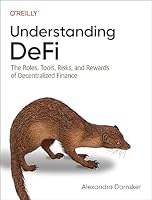
Using Financial Accounting Information: The Alternative to Debits and Credits, 9th Edition
- Length: 848 pages
- Edition: 9
- Language: English
- Publisher: Cengage Learning
- Publication Date: 2014-01-01
- ISBN-10: 1285183231
- ISBN-13: 9781285183237
- Sales Rank: #749622 (See Top 100 Books)
USING FINANCIAL ACCOUNTING INFORMATION, 9E is a non-debit/credit text known for its strong decision-making focus and its incorporation of flagship companies for increased relevance. This text provides the appropriate blend of academic rigor with step-by-step learning and decision-making models that reach today’s students and equip them with the skills they need to be effective decision makers and future business leaders. Instead of an abstract approach to accounting, USING FINANCIAL ACCOUNTING INFORMATION takes students through recognizable focus companies and their specific financial data and business strategies, imparting students with real-life experience and a model to hone the skills necessary to making important decisions. This edition features three key models that provide students with a more structured approach to understanding financial data and explains how it is used to make sound business decisions. The Transaction Analysis Model helps students see the effects an economic event has on the accounting equation and financial statements, the Financial Decision Framework focuses on ratio analysis and financial decisions, and the Ethical Decision Model helps students use ethical judgment when applying accounting principles. USING FINANCIAL ACCOUNTING INFORMATION, 9E will help students learn and understand core accounting rules. It also will give them a framework through which they can apply their knowledge to make effective business decisions.
Table of Contents
Chapter 1. Accounting as a Form of Communication.
Chapter 2. Financial Statements and the Annual Report.
Chapter 3. Processing Accounting Information.
Chapter 4. Income Measurement and Accrual Accounting.
Chapter 5. Inventories and Cost of Goods Sold.
Chapter 6. Cash and Internal Control.
Chapter 7. Receivables and Investments.
Chapter 8. Operating Assets: Property, Plant, and Equipment, and Intangibles.
Chapter 9. Current Liabilities, Contingencies, and the Time Value of Money.
Chapter 10. Long-Term Liabilities.
Chapter 11. Stockholders’ Equity.
Chapter 12. The Statement of Cash Flows.
Chapter 13. Financial Statement Analysis.
Appendix A: International Financial Reporting Standards.
Appendix B: Excerpts from Under Armour’s Form 10-K.
Appendix C: Excerpts from Columbia Sportswear’s Form 10-K.







